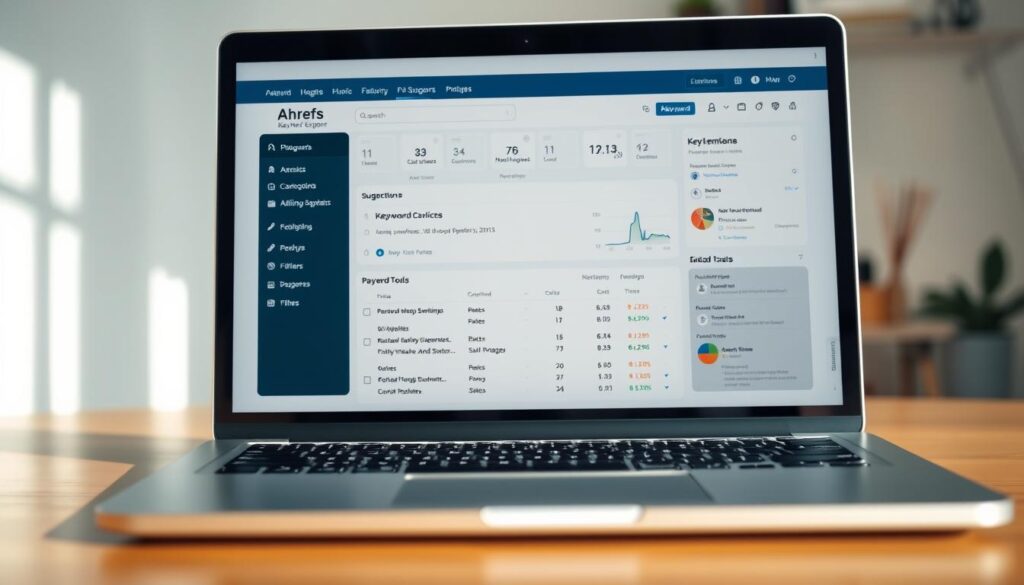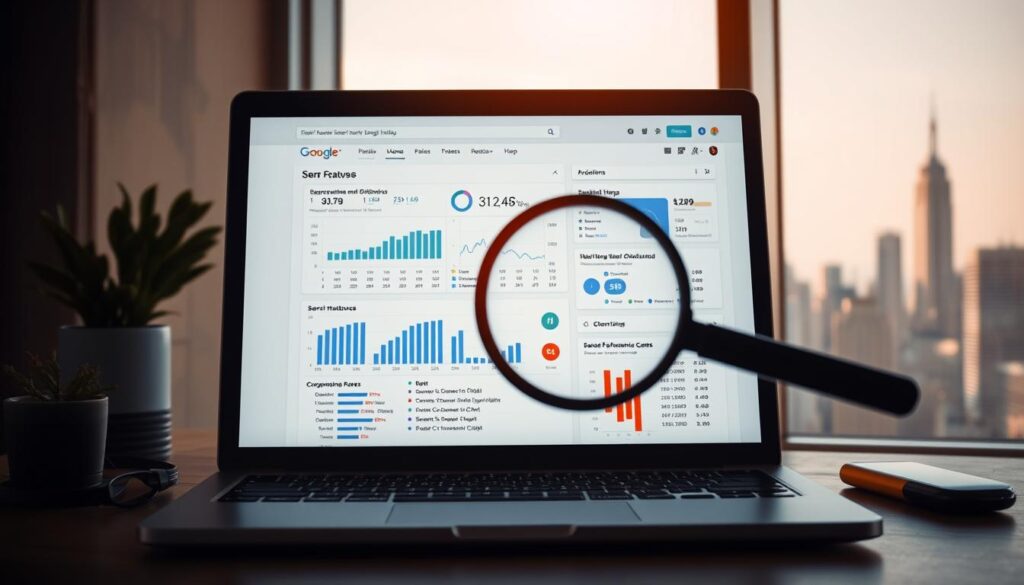What if everything you know about keyword research is becoming obsolete? As search engines evolve, traditional ranking tactics now compete with AI-generated summaries and chatbot responses. The digital landscape has shifted dramatically since Google’s March Core Update, with AI overviews appearing in over 16% of U.S. searches—a 117% increase in just months.
Modern SEO demands more than tracking search engine rankings. Professionals must analyze visibility across social platforms, forums, and AI-driven content interfaces. Tools that once focused on keyword difficulty scores now need to measure performance in LLM-generated answers and dynamic overview panels.
This shift creates both challenges and opportunities. Brands that adapt quickly can dominate emerging visibility channels, while others risk fading into irrelevance. The key lies in understanding how artificial intelligence reshapes user behavior—and which metrics matter most in this hybrid search environment.
Key Takeaways
- AI overviews now influence 1 in 6 U.S. searches, changing how users interact with results
- Effective keyword strategies require monitoring across search engines, social media, and AI interfaces
- Traditional ranking positions matter less as AI-generated content gains prominence
- SEO tools must analyze both conventional metrics and AI visibility indicators
- Adapting to hybrid search landscapes ensures competitive advantage in evolving markets
Introduction to Ahrefs Keyword Explorer AI

Modern search optimization requires more than basic volume tracking. Platforms now combine massive data repositories with intelligent suggestion systems, analyzing 29 billion terms to uncover hidden opportunities. This approach shifts focus from chasing existing trends to predicting emerging user needs.
Smart Pattern Recognition
Advanced algorithms process linguistic patterns across forums, social platforms, and voice queries. Unlike manual methods, these systems detect subtle connections between niche topics and broader search behaviors. Users gain insights into psychological triggers and cultural nuances that influence click-through rates.
Strategic Content Development
The technology enables proactive strategy creation through:
- Automated identification of underserved subtopics
- Real-time tracking of trending phrases across regions
- Prediction models for seasonal search spikes
By integrating these AI tools, marketers streamline content planning while maintaining competitive agility. The system’s multilingual capabilities reveal cross-border opportunities often missed in traditional analysis.
Setting Up Your Ahrefs Account and Tools

Mastering search visibility requires more than just data collection. Proper configuration of analytical platforms transforms raw metrics into actionable strategies. Begin by structuring core components to monitor performance across devices, regions, and content types.
Configuring Rank Tracker and Site Explorer
The rank tracker setup prioritizes simplicity. Users input target phrases, select geographic markets, and specify languages in under five minutes. Default weekly updates balance resource efficiency with fresh insights, while premium plans enable daily tracking for volatile industries.
Site explorer configuration reveals competitor strategies through organic keyword portfolios and traffic estimates. Filter results by device type or regional search patterns to identify untapped opportunities. Historical charts display ranking fluctuations, helping teams correlate content changes with visibility shifts.
Google Search Console Integration and Setup
Linking Google’s platform enhances accuracy by merging click-through rates with keyword databases. This fusion provides:
- Validated impression data from actual search results
- Device-specific performance comparisons
- Seasonal traffic pattern recognition
Automated reports streamline client communications, while custom alerts notify teams of ranking drops. For professionals exploring data-driven monetization strategies, these tools clarify which content drives measurable outcomes.
Leveraging Traditional and AI-Driven Keyword Research

The evolution of search technology demands hybrid strategies combining time-tested methods with predictive analytics. Modern professionals now balance manual analysis with automated trend forecasting to maintain visibility across multiple platforms.
Exploring the Organic Keywords Report and SERP Features
Analyzing competitor strategies begins with the organic keywords report. This tool reveals phrases driving traffic to rival sites, including monthly search volumes and difficulty scores. Marketers cross-reference this data with their own content gaps to prioritize high-value opportunities.
SERP feature analysis uncovers how visual elements impact user engagement. Featured snippets and local packs now account for 35% of clicks in competitive niches. Understanding these patterns helps optimize content for both rankings and visibility in specialized result blocks.
Utilizing Trending Keyword Detection and Matching Terms
Advanced algorithms categorize emerging search patterns into actionable types:
| Growth Pattern | Opportunity Type | Content Strategy |
|---|---|---|
| Linear Growth | Long-term stability | Evergreen resource creation |
| Exponential Surge | Viral trends | Rapid-response articles |
| S-Curve | Peak-phase capture | Preemptive guides |
The matching terms function expands discovery beyond exact phrases. It identifies related queries sharing search intent, like “best running shoes for flat feet” matching “arch support sneakers”. This approach helps create comprehensive content clusters.
Integrating these methods with automated trend analysis tools enables teams to spot rising phrases 47% faster than manual methods. Real-time alerts about competitors’ new keyword targets further refine market positioning strategies.
Mastering Ahrefs Keyword Explorer AI for SEO Success
Optimizing search performance requires precise command of analytical tools that decode modern search behaviors. Platforms now offer layered filtering systems to balance competitive insights with achievable targets, particularly when evaluating phrases with high commercial value.
Strategic Implementation of Core Features
The process begins with entering target phrases into the search interface. Single-term queries generate detailed reports showing monthly search volume, historical trends, and related questions. Bulk analysis displays comparative metrics across multiple terms, enabling quick prioritization.
Advanced filters help narrow options using three key parameters:
- Difficulty scores below specific thresholds
- Traffic potential exceeding baseline estimates
- Commercial intent indicators like CPC values
Organizing findings into shareable lists streamlines team collaboration. Professionals using AI tools for content creation can align outputs with prioritized terms from these curated collections.
Evaluating Real-World Ranking Potential
Assessing keyword difficulty involves analyzing top-ranking domains’ authority and backlink profiles. Pages dominating results for “budget hiking gear” typically showcase comprehensive buying guides from established outdoor retailers.
Traffic potential calculations consider multiple variables:
- Featured snippet ownership likelihood
- Local pack inclusion probabilities
- Seasonal search pattern adjustments
Marketers should cross-reference these metrics with their site’s current capabilities. Targeting phrases with moderate competition and rising search interest often yields better ROI than chasing highly competitive terms.
Maximizing Competitive Analysis and Brand Monitoring
Navigating modern digital competition requires more than tracking rankings—it demands real-time brand intelligence across evolving platforms. Advanced monitoring systems now decode visibility patterns in AI-generated answers and social conversations, revealing strategic opportunities.
Employing Brand Radar for AI Mentions
Brand Radar identifies visibility gaps in generative search results. It tracks mentions across ChatGPT, Perplexity, and Google’s AI Overviews. Marketers discover which phrases trigger brand references and pinpoint keywords competitors dominate in AI responses but their own content misses.
This tool helps teams optimize content for emerging AI interfaces. For example, a skincare brand might find its products appear in answers for “best moisturizers” but not “vegan winter skincare.” Integrating these insights with AI-powered competitor analysis sharpens market positioning.
Using Mention for Social Media and PR Insights
The platform monitors brand sentiment across 50+ channels, including Reddit and niche forums. Real-time alerts flag spikes in negative feedback or viral praise. Geographic filters show regional perception differences, while influencer scoring identifies top advocates.
Advanced Boolean searches isolate high-impact conversations. A query like “product recall NEAR/3 [brand]” detects crisis signals early. Combined with advanced monitoring tools, this approach reduces manual tracking by 68%.
Automated reports highlight trending topics and competitor content strategies. Teams quickly adapt campaigns using these insights, ensuring consistent brand visibility across hybrid search environments.
Conclusion
Modern search success hinges on unified monitoring systems that bridge traditional and emerging channels. Combining keyword research tools with social listening capabilities creates a complete visibility framework. Platforms like those discussed enable professionals to track organic traffic sources while identifying growth opportunities in AI-driven responses and community discussions.
Cost-efficient solutions now deliver enterprise-grade insights without complex setups. Entry-level plans provide core functionality for startups, while advanced tiers support multinational campaigns. This pricing structure lets teams prioritize metrics that align with specific business goals, from local page rankings to global brand awareness.
Future-proof strategies require tools that analyze user intent across multiple interfaces. Integrating data-driven keyword strategies with social listening capabilities helps maintain relevance as search behaviors evolve. Teams gain real-time alerts about trending phrases and competitor movements across all discovery channels.
Mastering these systems transforms raw data into actionable roadmaps. By focusing on measurable outcomes and adaptive planning, organizations secure lasting visibility in dynamic digital environments.







